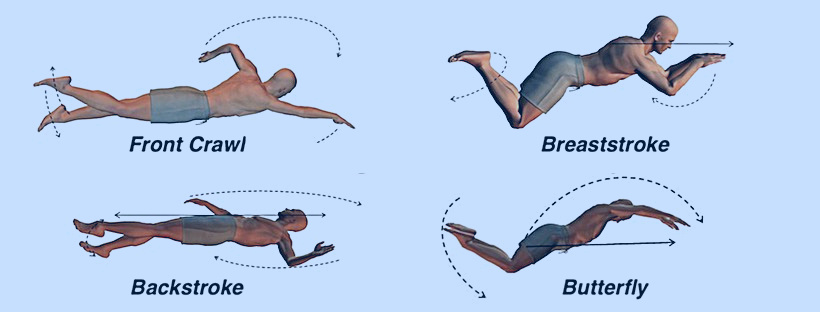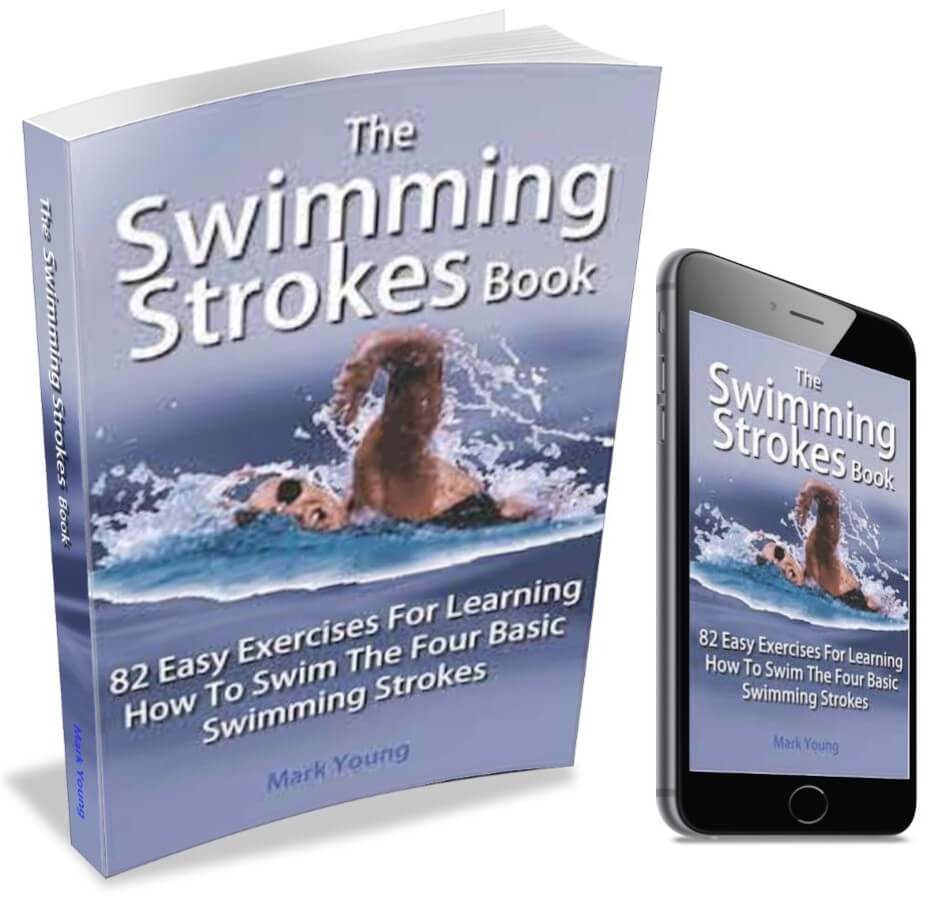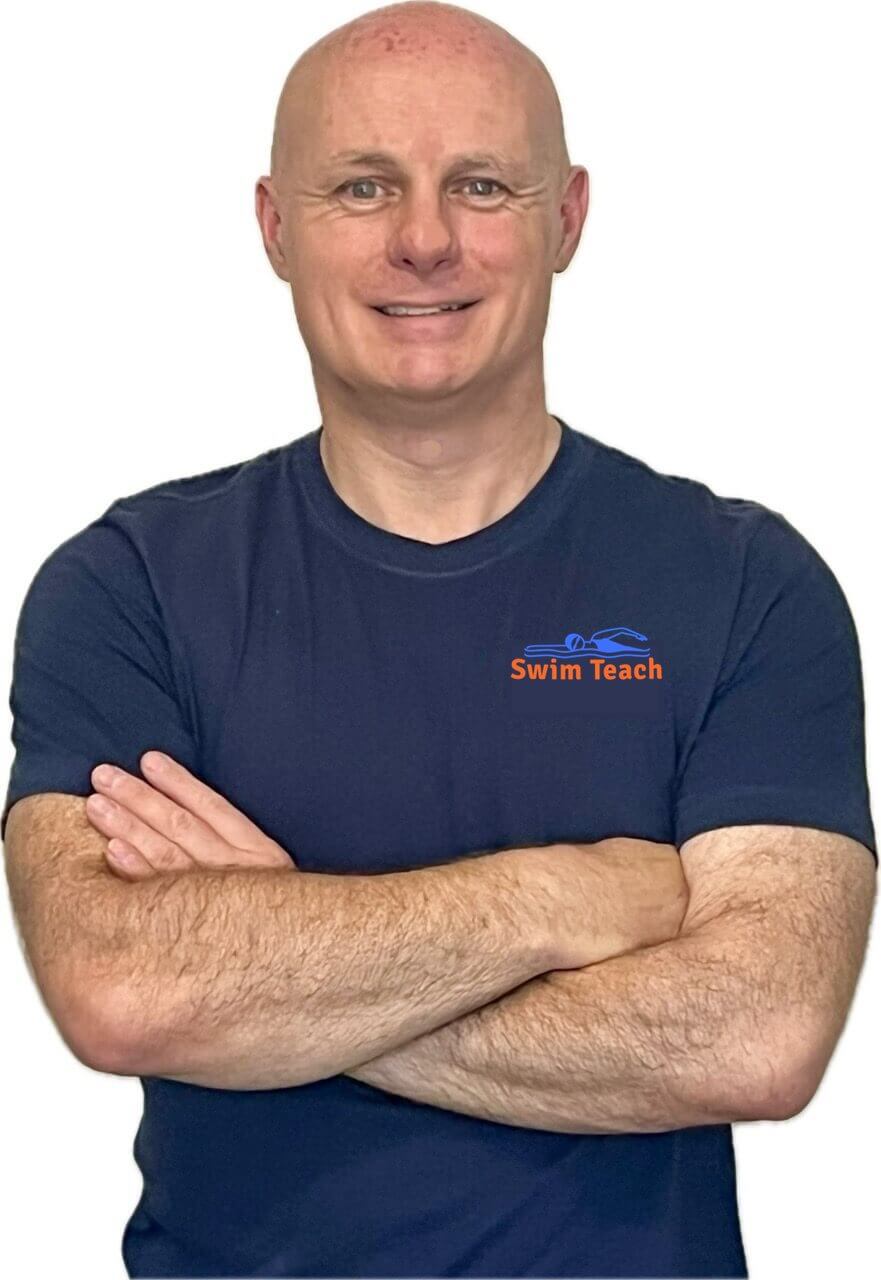- Swim Teach Home
- tips for beginners
- Types of Swimming Strokes
Different Types of Swimming Strokes
You've probably seen the different types of swimming strokes being swum in your local pool or on TV, but which one is which? Where did they come from, what are the differences and how difficult is each one to learn?
Everything you wanted to know about different swimming styles is revealed right here...
What are the Different Swimming Strokes?
Which one is which?
Front crawl, breaststroke, backstroke and butterfly stroke. You have heard of these referred to as certain styles of swimming or as particular swimming techniques, but what makes them different from each other?
These four different swimming strokes can be classified into two groups:
- alternating strokes
- simultaneous strokes
Alternating Strokes
Front crawl technique and backstroke can be referred to as alternating strokes. This is due to the alternating action of the arms and legs. One arm pulls through the water as the other recovers over the water surface, therefore, their actions alternate.
It can be argued that this alternating action is faster and more efficient when it comes to moving through the water.
Apologies for stating the obvious, but the main difference between front crawl and backstroke is that one is swum on the back, whilst the other is swum on the front. The clue is in the name.
The alternating kick action makes these knee-friendly swimming strokes.
Front Crawl (or Freestyle)
Front crawl, often called 'freestyle', is the fastest of the four basic swimming strokes. It is an alternating stroke due to the continuous alternating movements of the arms and legs.
The arm pull and leg kick movements for front crawl are continuous and alternating and keep the stroke balanced as the swimmer moves through the water. Click here for front crawl technique steps.
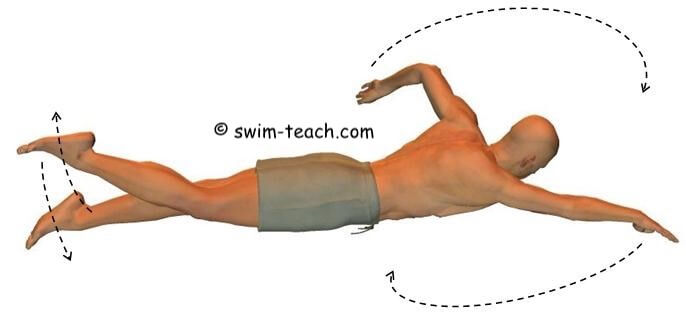 Front Crawl Swimming Stroke
Front Crawl Swimming StrokeBeginners learning to swim front crawl should break the stroke into separate parts. For more details on how to learn front crawl, click here.
For swimming teachers looking for guidance on how to teach front crawl, click here.
Backstroke
Backstroke, also called backcrawl, is an alternating swimming stroke where the swimmer swims in a supine position (on the back, face up).
The arm pulls and leg kick movements follow a similar pattern to that of front crawl, where the kicks and pulls alternate and balance the stroke. You can improve this even further by focusing on the proper backstroke kick to generate smoother propulsion and better leg alignment.
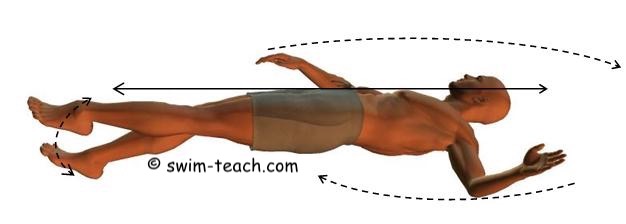 Backstroke Swimming Stroke
Backstroke Swimming StrokeBeginners can find more details on how to swim backstroke by clicking here.
For more in-depth information about these two strokes and how to swim them, click the one below.
What are Simultaneous swimming Strokes?
Breaststroke and butterfly are both simultaneous types of swimming strokes because of their arm pull and leg kick actions occurring together. In other words, both legs kick together at the same time and both arms pull and recover together simultaneously.
The main difference between these two strokes is how the arms and legs move. For breaststroke, the arms pull in a circular motion whilst the legs kick around in a circular motion and everything takes place under the water surface. This makes breaststroke the most inefficient of the four basic strokes.
Butterfly legs kick together but in an up and down motion, driven by the undulating body movement, whilst the arms pull back and recover over the water. This stroke is more efficient than breaststroke but requires a considerable amount of power and stamina.
Breaststroke
Breaststroke is the slowest of the four basic swimming strokes and is a simultaneous stroke by nature of the arm pull and leg kick movements. Both legs kick around simultaneously in a frog-like action as the arms pull in a circular motion in front of the swimmer.
If your kick feels weak or a bit messy, this quick guide to breaststroke leg technique walks you through the whip action and foot turn-out step by step.
One thing many swimmers struggle with is how and when to breathe while doing the breaststroke. You’ll find that learning good breaststroke breathing rhythm makes a big difference to both endurance and comfort in the water.
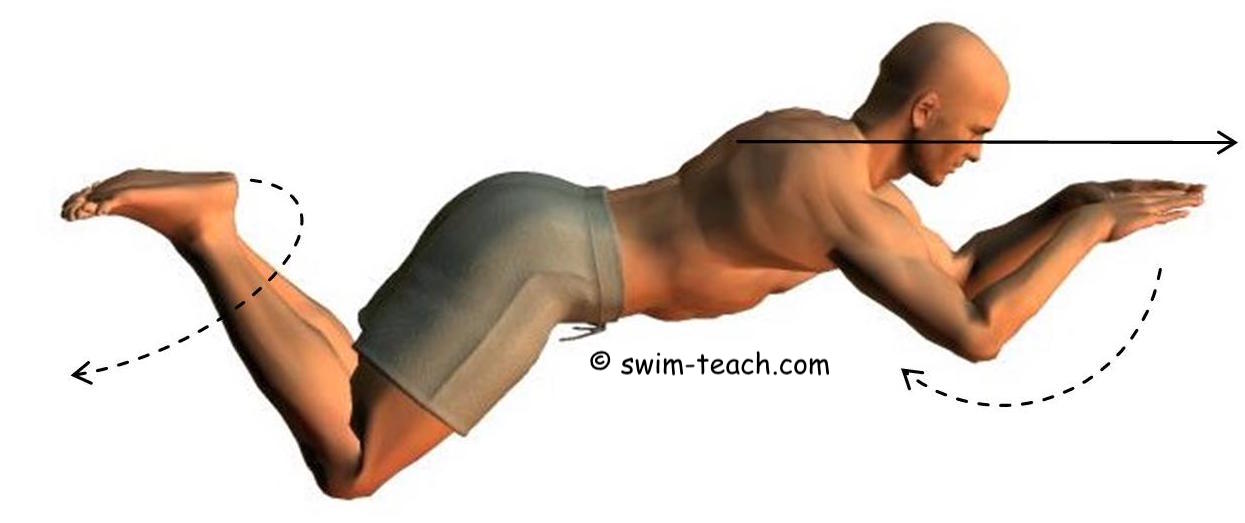 Breaststroke Swimming Stroke
Breaststroke Swimming StrokeLearn how to swim breaststroke in stages by clicking here.
For swimming teachers looking for lesson plans, fundamental drills and more information on how to teach breaststroke, click here.
Butterfly Stroke
Wondering how to do butterfly stroke? This swimming stroke is arguably the most difficult of the four basic strokes, as it requires tremendous power and stamina. The continuous undulating body movement begins at the head. It ends with a powerful simultaneous leg kick as the arms pull through and simultaneously recover over the surface of the water.
If you’re refining timing and rhythm in butterfly, this quick guide to breathing in butterfly stroke shows when to lift for air without disrupting the undulating flow.
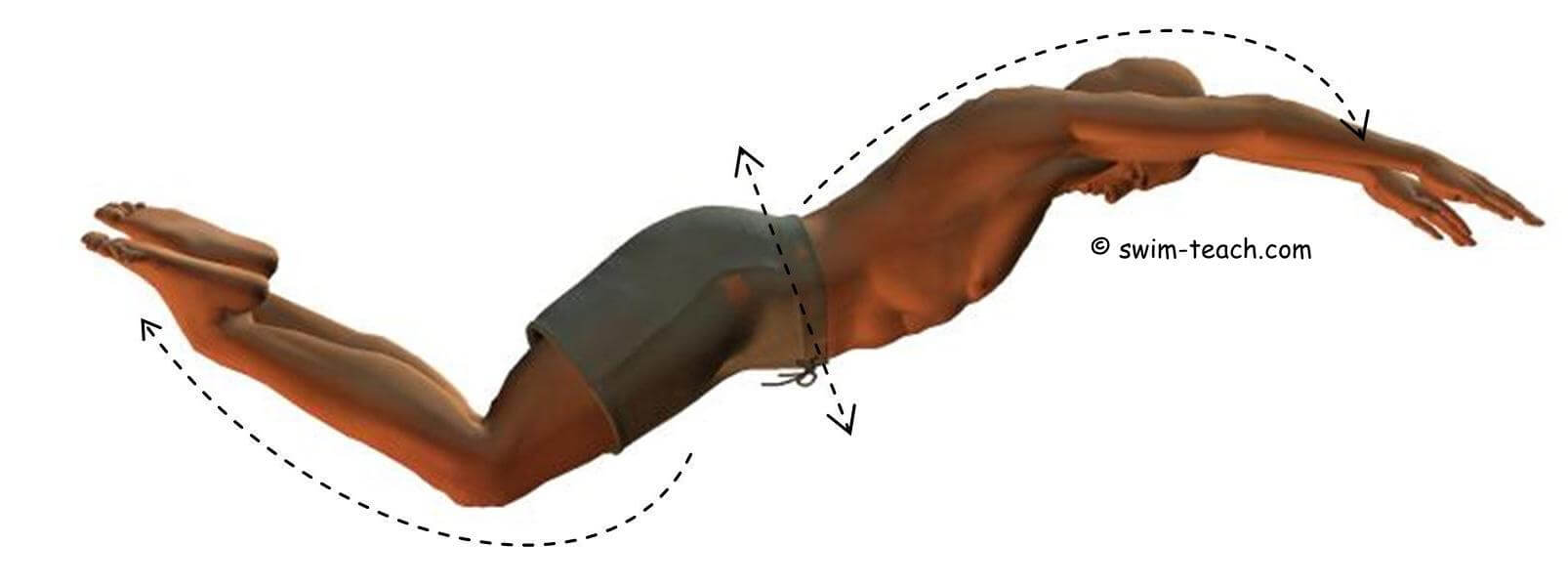 Butterfly Swimming Stroke
Butterfly Swimming StrokeFor a beginner's guide to swimming butterfly stroke, click here.
Swimming teachers, click here for guidance on teaching butterfly stroke in your swimming lessons.
For more detailed information about either of these two swimming strokes, click below.
Take a look back in time at the history of swimming and see the origins of the four basic swimming strokes.
Which Stroke Should I Learn First?
For most adult beginners, breaststroke and backstroke both offer a gentle introduction to swimming. Breaststroke features simultaneous arm and leg movements, along with a natural breathing rhythm. Its pull helps lift your head, making breathing inward feel more natural and timing easier to manage.
Backstroke, with your face above water, eliminates breath timing altogether and lets you breathe naturally - one less coordination challenge to worry about. Both strokes allow you to focus on mastering body position and alignment rather than worrying too much about breathing technique.
By contrast, freestyle involves alternating movements and side breathing, which demands greater coordination of rotation, timing, and rhythm. Common mistakes include sinking hips, breath-holding, and generally trying to swim too fast.
Starting with breaststroke or backstroke helps build body awareness, confidence, and controlled breathing - setting you up to progress smoothly into learning freestyle. Buoyancy and body position are important factors when learning swimming strokes.
Using swimming flippers for freestyle and butterfly can be very beneficial for building strength, stamina and perfecting technique.
Look for some swimming motivation? Look no further!
FAQ: Choosing and Using Strokes
Is breaststroke really easier than freestyle for beginners?
Yes, many adults find breaststroke swimming technique easier because you can lift your head naturally to breathe and focus on steady, symmetrical movements rather than coordinating side-breathing.
Why do some people start with backstroke?
Backstroke swimming technique keeps your face out of the water, so you can breathe freely. This helps nervous swimmers feel more relaxed and lets them concentrate on body position and balance.
What’s the hardest part about learning freestyle first?
Front crawl (freestyle) requires you to combine rotation, arm strokes, kicking, and side-breathing all at once. Common errors include holding your breath too long, sinking hips, and mistimed breaths.
How should I progress once I’m confident?
Start with body position and breathing in breaststroke or backstroke, then move on to freestyle. A structured set of beginner exercises and drills can guide you through each stage, building confidence and reducing frustration.
Which swimming stroke is fastest?
Freestyle (front crawl) is the fastest for most swimmers because of its streamlined body position and continuous propulsion. Mastering front crawl breathing technique is key to swimming it efficiently.
Which stroke burns the most calories?
Freestyle at moderate to vigorous intensity typically burns the most overall. Butterfly also burns a very high amount, but it’s difficult to maintain for long periods. If your goal is fitness, explore more swimming for fitness tips that can help build endurance.
Which stroke is best for beginners?
Swimming tips for beginners often recommend breaststroke or backstroke first, since they allow simpler breathing and body control. Once confident, many swimmers progress to freestyle.
Help and Support for all types of swimming strokes
My best-selling book, simply titled 'The Swimming Strokes Book' is your best friend when it comes to learning the different swimming strokes. It breaks down each technique into parts and the photos and diagrams make learning them easier than ever.
Click below and download a copy to your computer, tablet or mobile device. Or, click here for more details.
I am a member of the Amazon Associates Program and I will earn a commission from qualifying purchases at no extra cost to you.
Real-Life Questions and Answers
I would like some help with swimming training to be a lifeguard. 'This sounds like a challenging test for a lifeguard position, and it is clear that your stamina and overall fitness level are holding you back.'
